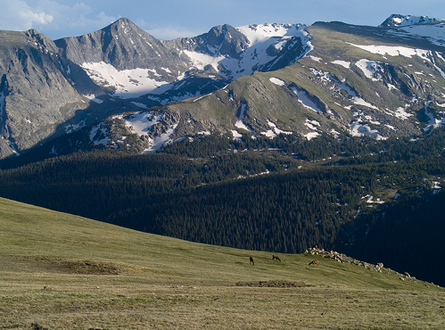Bad Air Bad For Parks

Air pollution in national parks isn’t a new problem, but it seems that it could do more than ruin the view: Increasing amounts of ammonium in 16 national parks could be causing subtle shifts in plants and animals, altering fragile ecosystems in the process.
Already, increased amounts of ammonium in Rocky Mountain National Park have caused grasses to replace flowers in alpine tundra zones. Similar shifts could occur in marquee parks like Yellowstone, Mount Rainier, and Canyonlands. Researchers think the ammonium surge could come from vehicle emissions, factory waste, and large-scale farms.
“We’re in the early stages of seeing impacts to the parks but the longer we let it go, the harder it is to fix later,” said Tamara Blett, an ecologist with the National Park Service’s air quality branch in Denver. “Nitrogen is a fertilizer. It’s used on lawns to help them grow and be green. That’s fine for lawns but not good for national parks where we want them functioning in a natural way.”
Other threatened parks include Washington’s Olympic National Park, Mesa Verde National Park in Colorado, New Mexico’s Capulin Volcano National Monument, and Chiricahua National Monument and Fort Bowie National Historic Site, both in Arizona.
Right now, RMNP serves as ground zero in the battle against ammonium. Park scientists hope to identify the sources and have drafted a plan with federal regulators and state officials to cut ammonium levels by half over 25 years.
Good. Because if Rocky Mountain’s tundra becomes a soccer lawn, I swear somebody’s going to get their butt kicked.
—Ted Alvarez
Trends worsening for pollutant in 16 parks (AP)
Image Credit: devriesm